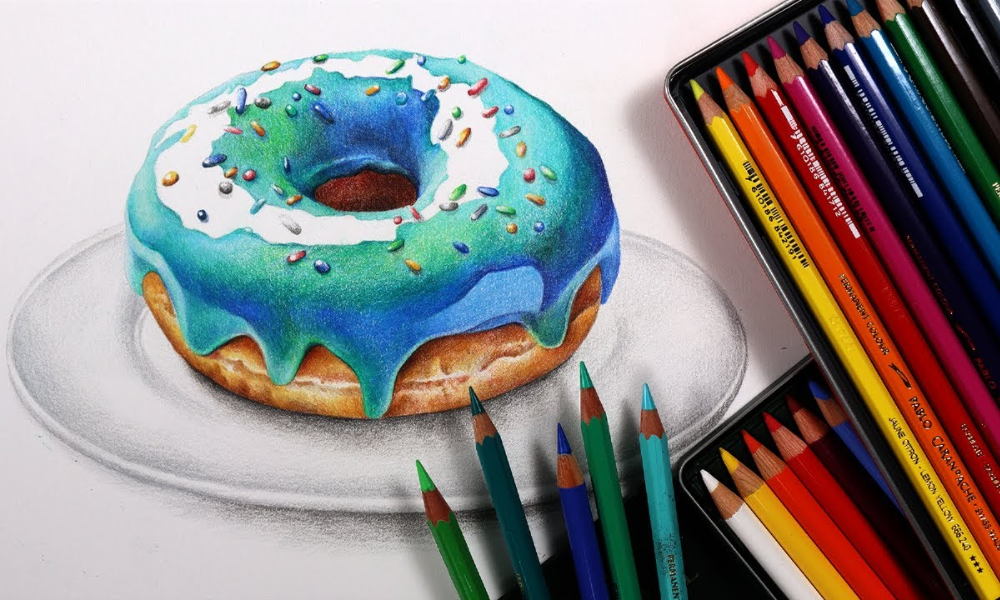Color pencils are more than just basic school supplies—they’re powerful tools for creative expression. Whether you’re a student working on a classroom assignment, a hobbyist exploring new styles, or a professional artist crafting detailed illustrations, color pencils offer a world of possibilities.
In this blog, we’ll explore 10 creative ways to use color pencils in your art projects. These techniques will not only spark your imagination but also help you make the most of your color pencil collection.
Layering Colors for Depth and Realism

Layering involves applying multiple shades on top of one another to build rich textures and tones. This technique allows artists to create realistic shadows, highlights, and depth in drawings.
Tips:
-
Start with light colors and build up gradually.
-
Use circular motions for even application.
-
Apply pressure gently to avoid damaging the paper.
Blending with Tissue or Cotton
Blending smooths out harsh lines and helps transition between colors. Using tissue or cotton swabs allows for soft, cloud-like effects that are perfect for backgrounds and subtle textures.
Tips:
-
Blend gently to avoid smudging.
-
Use baby oil for a polished finish (test first).
-
Ideal for skies, water, or soft surfaces.
Burnishing for Bold, Vivid Colors

Burnishing compresses layers of color using a colorless blender or white pencil. This results in a smooth, glossy look that appears more like paint than pencil.
Tips:
-
Use a white or cream pencil to burnish.
-
Press firmly for a polished finish.
-
Best used at the final stage of your artwork.
Using Color Pencils with Water for a Watercolor Effect
Watercolor pencils can be activated with water to give a fluid, paint-like appearance. They offer the control of a pencil with the beauty of watercolors.
Tips:
-
Sketch lightly before adding water.
-
Use a wet brush to blend.
-
Great for creating soft, dreamy effects.
Scratching Technique for Texture
This creative method involves scratching through the layers of colored pencil to reveal lines or patterns. It’s useful for adding intricate details like fur or grass.
Tips:
-
Layer color generously before scratching.
-
Use a craft knife or stylus tool carefully.
-
Excellent for texture-heavy subjects.
Combining with Other Mediums
Color pencils mix well with pens, markers, and paints. Mixed-media projects allow for more experimentation and can lead to unique, dynamic results.
Tips:
-
Outline with pens, then fill with pencils.
-
Add highlights with gel pens or acrylics.
-
Blend markers and pencils for vibrant illustrations.
Creating Abstract Art and Patterns
Not all artwork needs to be realistic. Use your color pencils to explore abstract designs, mandalas, or repetitive patterns that express your mood or style.
Tips:
-
Use geometric shapes and lines.
-
Experiment with symmetry and rhythm.
-
Let your imagination run wild!
Highlighting with White Pencil or Gel Pen
Adding highlights can dramatically enhance your drawing by simulating light and shine. Use a white pencil or gel pen to make specific areas pop.
Tips:
-
Highlight reflections on glass, metal, or eyes.
-
Add sparkles to fantasy or decorative art.
-
Layer white over dark shades for contrast.
Stippling and Hatching Techniques
Stippling (dots) and hatching (lines) are shading methods that can add unique textures and dimensions to your art. These techniques are especially useful in comic or ink-style drawing.
Tips:
-
Use stippling for soft, subtle shading.
-
Hatch lines close together for deeper tone.
-
Combine both for a sketchbook aesthetic.
Color Pencil Transfers
This fun trick involves transferring color from one sheet of paper to another. It’s great for adding soft textures or base layers to a project without direct coloring.
Tips:
-
Shade a solid area on scrap paper.
-
Press and rub it onto your artwork.
-
Use it to create light, faded backgrounds.
Final Thoughts
Color pencils are a versatile and affordable way to bring color into your life. Whether you’re blending, layering, burnishing, or experimenting with textures, there's no limit to what you can create. Use these ten techniques to explore your creativity and make your art stand out.
No matter your age or skill level, color pencils are tools of imagination—and with the right techniques, even a simple sketch can become a masterpiece.

